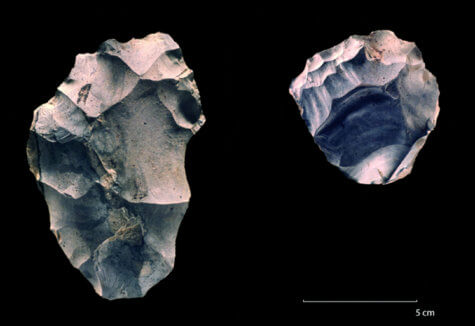LEIDEN, Netherlands — The sharing of ideas, habits and cultures among humans dates back much further than previously thought. Scientists say primitive humans started spreading their innovations among one another began 400,000 years ago.
Our ancestors learned how to tame fire to cook, keep warm and ward off predators. The discovery of fire had important social and behavioral implications, encouraging people to gather together and stay up late. The knowledge also helped them venture into colder climates, where they passed it on.
It was similar to the way in which modern humans today begin enjoying the same cuisines and music. Earlier signs of the deliberate sparking of flames are sparse and indistinguishable from natural events. However, there is well-preserved evidence at many sites from 400,000 years ago.
Interestingly, it occurs at a geologically similar time across the Old World from Africa to western Eurasia and in different populations. “Control of fire is one of the most important technological innovations within the evolution of humankind. The archaeological signal of fire use becomes very visible from around 400,000 years ago onward,” the authors write.

The phenomenon could be explained by independent invention, migrations, or gene transmission through inter-breeding. However, “cultural diffusion” — beliefs and behaviors spreading from one group to another — is the only plausible explanation according to the Dutch team.
Archaeological data and analysis of ancient genomes show hominin groups met often and were tolerant towards one another. “They transmitted ideas and techniques over large regions within relatively short time periods. Furthermore, it is likely that the large-scale social networks necessary to transmit complicated skills were also in place,” the study notes. “Most importantly, this suggests a form of cultural behavior significantly more similar to that of living humans than to our great ape relatives.”
The theory is backed by the speed of spread. There is also no indication from sediments or fossils of widespread environmental change or hominins moving in masses.
“This interpretation is supported by the slightly later spread, over the same region and in an even more constrained time period, of a relatively complicated method for making stone tools. This adds to current research suggesting hominin populations were exchanging genes, and that there were cultural interactions too,” the authors write. It precedes the cultural development linked to the mingling of Homo sapiens and neanderthals, our closest cousins, by about 350,000 years.
Copying of stone tools, such as prehistoric axes, occurred early in human evolution. The Levallois technique expanded from Africa through Europe and Asia. This technique allowed the stone tools to be sharpened as they were made by cutting off flakes of stone around the core.
“Given how important sociality is to hominin lives, questions about the social structures surrounding early fire use are essential to understanding the full implications of widespread fire use. This study suggests that cultural diffusion really took off around 400,000 years ago,” the study concludes.
Researchers hope the study will stimulate debate surrounding the mechanisms behind “this remarkably fast diffusion of fire and stone tool technology.”
This study is published in Proceedings of the National Academy of Sciences.
South West News Service writer Mark Waghorn contributed to this report.
